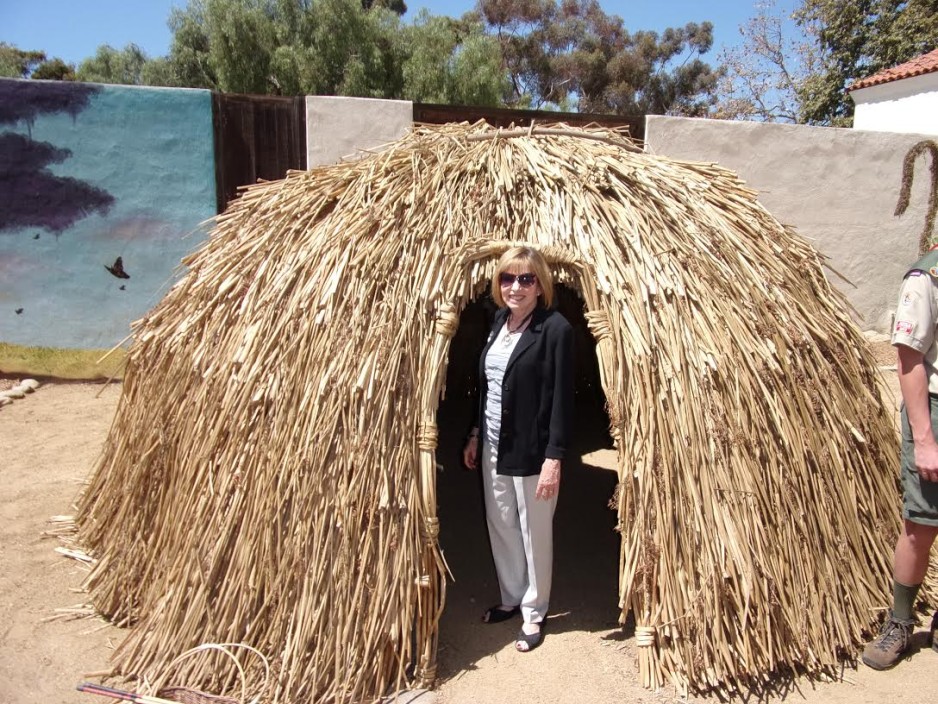This Chumash dwelling was constructed by Devin Kress (with some help) for his Eagle Scout merit at the Museum of Ventura County. Councilwoman Heitmann is seen checking it out.
Summarized from the Channel Islands National Park Service
Archeological evidence indicates that there has been a human presence in the northern Channel Islands for thousands of years. Human remains excavated by archeologist Phil Orr from Arlington Springs on Santa Rosa Island in 1959, recently yielded a radio-carbon date of over 13,000 years of age. Archeological sites on San Miguel Island show continuous occupation from 8,000 – 11,000 years ago.
The native populations of the Channel Islands were primarily Chumash. The word Michumash, from which the name Chumash is derived, means “makers of shell bead money” and is the term mainland Chumash used to refer to those inhabiting the islands. Traditionally the Chumash people lived in an area extending from San Luis Obispo to Malibu, including the four Northern Channel Islands. Approximately 148 historic village sites have been identified, including 11 on Santa Cruz Island, eight on Santa Rosa Island, and two on San Miguel Island. Due to the lack of a consistent water source, Anacapa Island was likely inhabited on a seasonal basis. A true maritime culture, the Chumash hunted and gathered natural resources from both the ocean and the coastal mountains to maintain a highly developed way of life.
Hundreds of years ago, the native island Chumash traveled these ancient waters for hunting, fishing, and trading. They built canoes, called tomols, from redwood trees that drifted down the coast, fastening the cut planks together with animal sinews and sealed with a tar-like substance called yop. Yop is a combination of pine pitch and asphaltum which occurs naturally in the Channel and along the coast from oil seeping into the water from below the earth’s surface. The tomol remains the oldest example of an ocean-going watercraft in North America.
By the time European explorers arrived in the Santa Barbara Channel, there were some 21 villages on the three largest islands of San Miguel, Santa Rosa and Santa Cruz, with highly developed social hierarchies that featured an upper class of chiefs, shamans, boat builders, and artisans, a middle class of workers, fisherman, and hunters, and a lower class of the poor and outcast. Because of the scarcity of fresh water, Anacapa and Santa Barbara islands did not support permanent habitation.
However, diseases introduced by the European explorers began a decline in the native population. As European colonists began to settle along the coast, introducing new economic enterprises, exploiting the marine resources, and establishing Catholic missions, the native food sources were depleted, native economies were altered, and island populations declined even further.
The mission system depended on the use of native labor to propel industry and the economy. The social organization of Chumash society was restructured, leading to the erosion of previous power bases and further assimilation.
Today, Chumash community members continue to move forward in their efforts to revive what was becoming a forgotten way of life. Much has been lost, but Chumash community members take pride in their heritage and culture.
With a current population nearly 5,000 strong, some Chumash people can trace their ancestors to the five islands of Channel Islands National Park. The Chumash reservation in Santa Ynez represents the only federally recognized band, though it is important to note that several other organized Chumash groups exist.

